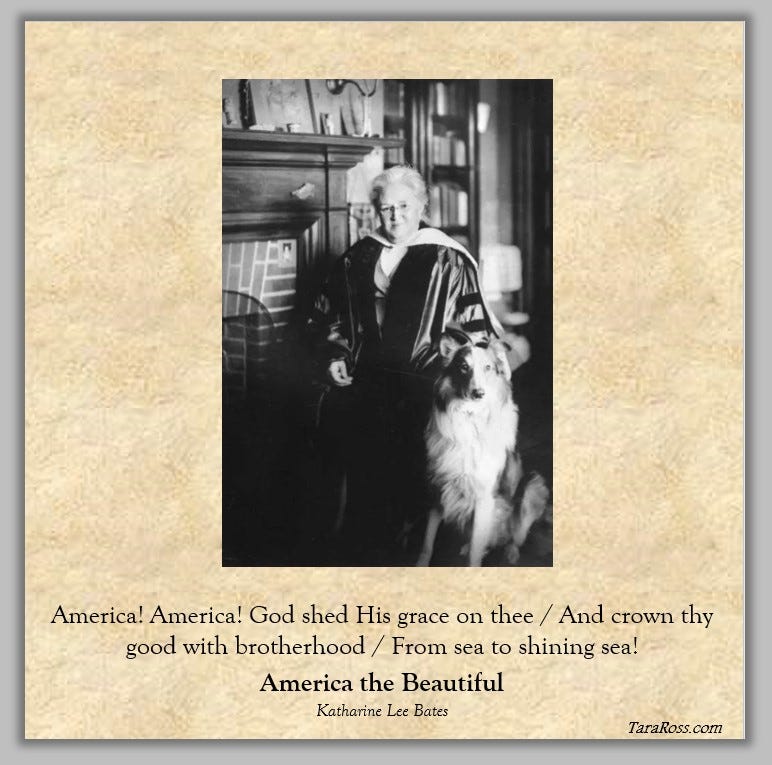TDIH: America the Beautiful
Bates and Ward never met each other. And neither of them made much money on the song. Instead, the result of their accidental partnership has simply been a great gift to the country.
On this day in 1893, a professor stands atop Pikes Peak. She is struck by the beauty around her and is inspired to write a poem. Her poem is later set to music. Today, we all know that song as “America the Beautiful.”
The song nearly became America’s national anthem. And it all started because a professor accepted a summer teaching position in Colorado.
That professor was Katharine Lee Bates, daughter of a minister and teacher. She’d been teaching at Wellesley for several years when she got an offer to teach at Colorado College. Little could she then know it, but the decision to take the summer teaching position would have far-reaching effects.
Bates was soon on a train, headed west. She visited Niagara Falls, and she saw the World Fair in Chicago. The scenery that flew past the train’s windows was stunning, and the trip made a deep impression on Bates. Already, she was seeing how great and beautiful and diverse the American countryside is.
This point would be driven home even more once she arrived in Colorado and was given an opportunity to hike to the top of Pikes Peak. The view from the top of the mountain was breathtaking, and she was overcome by all that she saw. She later wrote: “It was then and there, as I was looking out over the sea-like expanse of fertile country spreading away so far under those ample skies, that the opening lines of the hymn floated into my mind.”
Later, Bates remarked that “Greatness and goodness are not necessarily synonymous. Rome was great, but she was not good. . . . Unless we are willing to crown our greatness with goodness, and our bounty with brotherhood, our beloved America may go the same way.”
Bates’s poem was published on July 4, 1895, but it was revised after that initial publication when people started setting the poem to music. “When I found that you really wanted to sing it,” Bates remarked, “I rewrote it in some respects to make it a bit more musical.”
Did you know that the lines “And crown thy good with brotherhood, From sea to shining sea” used to be “Till souls wax fair as earth and air, And music-hearted sea”?
The poem was paired with many different tunes over the years until, finally, one particular melody by Samuel Ward stuck.
Interestingly, Bates and Ward never met each other. And neither of them really made any money on the song. Instead, the result of their accidental partnership has simply been a great gift to the country.
Sources can always be found on my website, here.





Betsy Tara Ross Ray Charles does it best!
Amen to this fact and song!